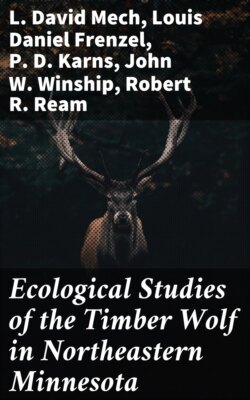Читать книгу Ecological Studies of the Timber Wolf in Northeastern Minnesota - Robert R. Ream - Страница 5
MOVEMENTS, BEHAVIOR, AND ECOLOGY OF TIMBER WOLVES
IN NORTHEASTERN MINNESOTA
ОглавлениеL. David Mech, L. D. Frenzel, Jr.,
Robert R. Ream, and John W. Winship
The largest population of wolves (Canis lupus) remaining today in the continental United States outside of Alaska is in northern Minnesota. As of mid-1970 this population was not legally protected, and the species, which once ranged over almost all of North America, is now considered by the U.S. Department of the Interior to be in danger of extinction in the contiguous 48 States. Until the present research, the only field studies of Minnesota wolves were those of Olson (1938 a, b) and Stenlund (1955). Those investigations provided much useful general information about Minnesota wolves and gave the present authors an excellent background with which to begin more detailed investigations.
This paper reports on the basic aspects of a series of studies that began in 1964, and concentrates primarily on wolf movements and activity, social behavior, hunting behavior, and population organization. Most of the data were collected during January, February, and March 1967; February, November, and December 1968; and January through August 1969. A total of 192 days was spent in the field.
According to a distribution map of wolf subspecies (Goldman 1944), the race of wolves in our study area is Canis lupus lycaon. However, evidence presented by Mech and Frenzel (see page 60) suggests that there may be strong influence by C. l. nubilus, a more western race of wolf formerly thought to be extinct (Goldman 1944).
Between 1965 and the present, wolves in the study area were neither protected nor bountied, and the influence of trapping and hunting is thought to have been negligible.
